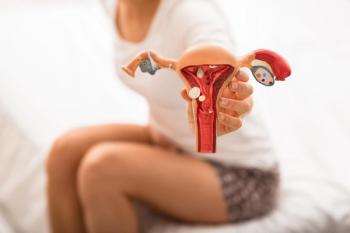
Shoulder dystocia: What if you could see it coming?
The authors say that this formula-which focuses on the size of both the baby and the mother-allows obstetricians to determine which women are at greatest risk for shoulder dystocia with permanent brachial plexus injury.
Key Points
What is especially disconcerting about shoulder dystocia is that until now obstetricians have had few means of predicting when it will occur or of effectively preventing it. Studies look at various schemes to accomplish the goal of predicting and preventing shoulder dystocia, but none has proved clinically feasible.1-3
Difficulty of predicting shoulder dystocia
1. Shoulder dystocia, while not rare, occurs only sporadically, in roughly 0.6% to 1.4% of vaginal deliveries.4,5 That has made it difficult to gain substantial experience and data on shoulder dystocia, or on the even more uncommon subset of it, deliveries where there is brachial plexus injury.
2. Deliveries are not reproducible. One mother can deliver a large baby easily, while another of the same physical dimensions and with a baby of the same size may experience an extremely difficult shoulder dystocia delivery. Upon analysis, the main risk factors for shoulder dystocia-suspected macrosomia, gestational diabetes, and/or a history of previous shoulder dystocia-have a low sensitivity (they predict relatively few cases of shoulder dystocia) and an extremely high false-positive rate (they occur frequently in normal deliveries).1,3,6
3. Traditionally, we have focused mainly on the size of the fetus by estimating birthweight.7,8 But the other component of shoulder dystocia-the size of the mother and her pelvis-has received scant attention.
Another difficulty is communicating the concept of risk to patients. For some patients, any risk to the baby is unacceptable. That makes it challenging to help patients place in perspective the various risks: 1 in 150 (average risk of shoulder dystocia); 1 in 6,000 (average risk of permanent brachial plexus injury); and the risk inherent in a C/S delivery which is, after all, major surgery. Individual patients are often not particularly concerned about the burden to the health care system from unnecessary cesarean deliveries as measured by the "number needed to treat" in preventing a permanent brachial plexus injury; understandably, they are more concerned that the injury under discussion might be to their child.
Newsletter
Get the latest clinical updates, case studies, and expert commentary in obstetric and gynecologic care. Sign up now to stay informed.










